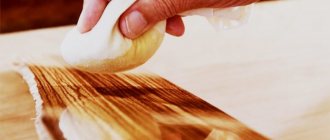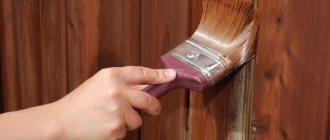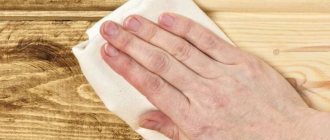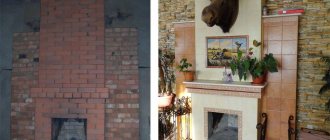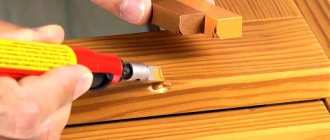Waxing is a popular way to improve the quality of wood and preserve its unique properties. Waxing with beeswax can be done at home; wood and products made from it are most often waxed. Waxing an oak barrel will help improve the quality of the product you will store in it. Waxing of barrels is widely used in winemaking, as well as in the production of other drinks. Today we’ll talk about how wood and barrels are waxed with beeswax.
What are the benefits of waxing wood?
Treating wood with wax creates a thin protective film on the surface and, at the same time, penetrates deeply into the pores of the wood, enhancing its protection. Along with the above, the wax does not clog the pores and the wood continues to “breathe”.
Any type of wood can be treated with wax.
The only drawback of treating wood with wax is that it cannot be used in rooms with high temperatures. Because when heated, the wax begins to melt and flow out. This is where the disadvantages of waxing wood end.
Let's move on to the advantages of waxing, which are much more numerous than the disadvantages.
Wax impregnation increases the water-repellent properties of wood
Waxing wood improves the appearance, highlights the wood structure and adds shine. If you add coloring agents to the composition, you can adjust the shade of the wood.
Waxing protects the wood from cracking, damage by pests and fungi. Protects against scratches and other damage.
By the way: Wax-based impregnation can remove existing scratches on wood. You need to select a composition that matches the color and rub it on the area with the defect. The scratch will become almost invisible to the eye.
Benefits of wax oil
Previously, yacht varnish was mostly used for this purpose, and it perfectly protected the wood from the harmful effects of moisture. The composition makes the color of the wood beautiful and rich, and the structure of the fibers – clearly expressed.
Oil-wax for wood coating
But varnish has its drawbacks. It wears out and cracks, and therefore needs to be renewed regularly (every 5-6 years, depending on the intensity of use). Removing the old layer is a complex process, and applying a new coating is associated with considerable difficulties. The varnish is toxic, and therefore precautions must be taken.
Compared to it, oil-wax has a number of advantages:
- Easy to apply. Even hand-prepared compounds can be easily rubbed into a wooden surface.
- Non-toxic. These products contain caustic components, and therefore you need to be careful when working with them. But most often, oil-wax is made from natural ingredients - non-toxic and safe for human health.
- Vapor permeability. If varnish tightly clogs pores and all kinds of holes, then oil-wax preserves them. Wood “breathes”, which leads to natural ventilation and prevents rotting processes.
- Practicality. When applied correctly, these compounds provide excellent protection against sudden changes in temperature, humidity and mold.
- Deep penetration. The varnish remains on the surface of wooden products, while the oil-wax penetrates deep into the structure of the fibers and provides more reliable protection.
If previously, when replacing floorboards, you had to remove the entire layer of varnish and reapply, now this can be avoided. You simply lay down a new board and coat it with the same compound that was used on the floor. This ensures a uniform structure of the entire coating.
When applying wax, the wood fibers remain free and not constrained. If the floorboards are laid on a heated floor system, then when the temperature changes, cracks will not appear on the surface of the wood, since it will be able to expand and contract in volume without deforming.
Wood waxing technology
- The first step is to clean the surface of the old coating, if there was any. Clean with solvent and allow to dry
- Next, the surface is sanded in order to remove all irregularities and roughness.
- Next, wax is applied. Before applying wax, you can saturate the wood with oil. This will enhance the protective properties of the wax.
- If the wax is hard, you need to heat it in a water bath; if you purchased ready-made wax for processing, you do not need to heat it additionally.
- To apply wax, you need to use a cloth that does not have lint. The wax is rubbed into the surface with a cloth until the fabric stops sticking to the surface. Cloth is used to treat smooth surfaces. To process the ends and shaped elements, use a brush.
- After finishing the treatment, you need to leave the surface alone for several hours so that the wax is absorbed into the pores of the wood. After time, the excess is removed with a soft cloth. After this, the surface is sanded.
- If you need to add shine, then apply another thin layer of wax.
Waxing compounds are sold in stores in a huge assortment. But if you want the composition to not have any unnecessary chemical inclusions, then you can make the composition yourself. And it will cost much less.
Waxing barrels with wax
To do this, waxing is used, which is carried out as follows:
- melt beeswax in a water bath, gradually add linseed oil, mix well;
- take a soft, wide brush and apply the composition to the surface of the barrel;
- When applying wax, you need to use a hair dryer, since when it warms up, the wax will lie on the walls more accurately and saturate the wood deeper. If you don’t have a construction tool, you can use a regular hair dryer to style your hair.
Once the waxing process is completed, wine or moonshine can be poured into the barrel. If you plan to store the container with the drink in a warm room, then the surface must be protected, otherwise the distillate will actively evaporate through the walls.
DIY waxing composition
The recipe for preparing the composition is simple.
You need turpentine, wax, rosin.
In proportions: 100 g wax, 50 g turpentine, 20-25 g rosin
The wax is melted, turpentine is added, and mixed thoroughly. Next, add rosin and mix thoroughly. Remove from heat and pour into a tin jar.
Wax, mastic, oil are traditional materials used by our workshop in the restoration of antique furniture.
During restoration, waxing wood, polishing furniture, impregnating wood with oil, mixtures of wax with turpentine, rosin, and other resins, make it possible to emphasize the beauty, color, and texture of valuable large-porous species of oak, ash, and chestnut. The waxing composition can be purchased ready-made, or you can make it yourself from beeswax, purified turpentine (pinene), and rosin.
Waxing is one of the ways to polish furniture. Its advantages include:
1. Always a quick positive effect.
2. Easy to apply.
3. To apply furniture wax to wood, no special skills are required, as when working with shellac polishes.
4. Modern wax mastics are convenient, safe, enriched with pleasant fragrances with the smell of bee honey, pine forest, lemon, floral aromas, and freshness.
5. The ability to quickly, without special skills, give a damaged antique varnish coating an expositional state.
Disadvantages include:
1. Wax on furniture made of natural wood is constantly absorbed by porous wood, or quickly wears off when touched. The polish becomes dull. Things require careful care and constant updating. Especially tabletops, protruding decorative overlays, facades, carvings.
Geometric wood carving for beginners. Master Class
Discussion: 54 comments
- Victoria:
03/29/2012 at 6:08 pmPlease clarify, is your mastic recipe designed for a large surface? Thank you)
Answer
admin:
03/29/2012 at 8:39 pm
Let me clarify. Everything that is written is correct, I tried it myself. Designed for a large surface. The more you cook, the more you'll have.
Answer
04/12/2012 at 4:33 pm
Flaxseed oil performs excellently as an impregnation - but not for food, but for artistic work. After drying, it rubs perfectly and looks especially impressive on turned work. And if you dilute it with 20 - 30 percent of fir varnish (also sold inexpensively in art stores) - then it’s a sight for sore eyes.
Answer
- admin:
04/16/2012 at 9:06 pm
Thanks for the advice! And if you soak bamboo with this impregnation, will it help against cracking? I’m actively looking for such impregnation specifically for bamboo, specifically for flutes.
Answer
Vladimir:
12/13/2014 at 9:44 pm
There are more than 60 types of bamboo. 12 of them contain a large amount of sugar (which is what pandas eat). To reduce the risk of cracking bamboo, it must first be heated well in order to destroy the saccharides in the bamboo, thereby strengthening the fibers. Next is the product – finishing treatment (oils, wax, etc.).
Answer
01/15/2017 at 11:06 pm
“Musical” varieties of bamboo cannot be saved with varnish alone; the humidity level during storage must be maintained. The varnish will only protect against temporary changes in humidity levels. But varnish or impregnation can also significantly affect the sound. There is an opinion that it is better to let the bamboo crack, “free” from tension.
Answer
02/07/2014 at 5:22 pm
Please tell me, can mastic based on linseed oil and wax be used to impregnate wooden floors (old boards) and do they need to be treated with something beforehand?
Answer
- admin:
02/09/2014 at 9:27 am
You can if you don't mind the smell of the oil. And when applying, you need to not just smear it, but also heat the floor with a hairdryer, for example. Then the mastic will penetrate deeper into the pores of the wood and will last longer. An oak floor is better suited for this. For pine, of course, varnish is better.
Answer
05/05/2014 at 9:28 pm
Can you please tell me how long this mastic can be stored?
Answer
- admin:
05/10/2014 at 1:11 pm
This mastic can be stored for a very long time, for years, there is nothing there to spoil
Answer
06/03/2014 at 6:54 am
Dear, please tell me, what is the difference between food flax and artistic flax? And is food suitable for processing?
Answer
10/31/2014 at 1:20 am
Hello, thank you for the useful and detailed information! I knew that some herbs and roots are added to linseed oil, which strengthen the tree and give it a tint, but I only came across the names of the herbs from you.
Please tell me, is it possible to apply linseed oil or wax to wood treated (coated) with acrylic primer or acrylic paints?
Answer
- admin:
01/16/2015 at 4:49 pm
Ekaterina, this is useless :)
Answer
11/06/2014 at 2:31 pm
Good day. This is a question: we cover barrels with mastic. First we apply it while it is hot, then we warm it up with a hairdryer, the mastic is absorbed into the oak up to 3 mm. But here’s the question: when water gets on the surface of the barrel, the area turns white and remains like stains. You take the hairdryer again, warm up the area and everything is restored. The mastic recipe is the same, only instead of turpentine we add white spirit. How can you get rid of this very negative moment?
Answer
- panchukole:
05/05/2017 at 10:28 pm
Hello! I have the same problem. I cover the butt of the towel with this impregnation. Otherwise, after the smallest board, you will lose streaks and white spots. Show me some kindness!
Answer
03/26/2020 at 2:46 pm
This property of beeswax, to avoid whitishness from water, carnauba wax is used.
Answer
11/17/2014 at 7:13 pm
Tell me how to achieve chocolate color on an oak tabletop? thanks in advance
Answer
- admin:
11/19/2014 at 2:39 pm
I can't help you here.
Answer
11/26/2015 at 9:04 am
You can tint both wax and oil to the desired color. There are special pigments for oils and waxes https://balenio.ru/magazin?mode=product&product_id=61832603. But there is another way, first apply a stain to the surface (preferably alcoholic, not water-based, it does not create a film, so oils and waxes will saturate the wood and not form a film like varnish), and then treat it with wax
Answer
01/06/2015 at 7:13 pm
Tell me why rosin is added to mastic.
Answer
- admin:
01/16/2015 at 4:42 pm
Sergey, rosin makes the mastic more durable and stable. In addition, such a surface becomes much less sticky and resistant to moisture. On products treated simply with wax, whitish spots often form due to moisture.
Answer
04/09/2015 at 1:09 am
What if you use mineral vaseline oil (medical or lamp oil) for impregnation?
Answer
- admin:
04/17/2015 at 7:06 am
Vaseline oil can be used. Heat the oil to 70-100 degrees in a bowl and apply in an even layer using a cotton swab. Repeat twice.
Answer
04/10/2015 at 9:38 am
Hello. Please tell me, is this type of impregnation, based on oil and wax, suitable for impregnating a cabinet? What most strongly reveals the structure of a tree?
Answer
04/24/2015 at 2:12 pm
What is the best way to treat oak handrails on a yacht? If it's not difficult for anyone, please tell me. Thank you in advance.
Answer
- Sorokina Olga:
12/17/2015 at 5:51 pm
Hello, it is better to impregnate oak handrails with teak oil; it saturates the wood well, is not afraid of moisture and protects against fungus, mold, and bugs. If you need a protective film on the handrails, you can treat them with Danish oil. Danish oil has a high dry residue and good wear resistance. Both teak and Danish oil can be used outdoors.
Answer
05/10/2017 at 11:48 am
Let's make an exchange. You give me a yacht, and I will give you a special substance for processing oak handrails
Answer
06/16/2015 at 4:46 pm
A product made from suvel (kuksa) was covered with linseed oil when cold, a mother-of-pearl effect appeared. I wanted to strengthen it, so I soaked it 3 more times and noticed that the initial effect had decreased. What did you do wrong?
Answer
08/25/2015 at 5:30 pm
Tell me, you can use paraffin instead of wax. If yes, then in what proportion. Thank you!
Answer
- Sorokina Olga:
12/17/2015 at 5:54 pm
What do you want to treat with paraffin? In principle, paraffin is more water resistant. Our clients impregnated wooden shingles with paraffin. They simply heated the paraffin in a bath and lowered the tiles into it to soak it better.
Answer
12/24/2015 at 9:50 pm
What is the best way to process small carved items? Can wax be replaced with paraffin when waxing?
Answer
- Sorokina Olga:
02/07/2016 at 11:12 pm
You can use wax, you can use oil. Small parts can be processed in a centrifuge, add wax and rotate, the wax is heated and applied to all products. True, this method may not be suitable for carved ones. You can coat them with shellac or oil.
Answer
01/11/2016 at 12:48 pm
Vladimir, is it possible to treat oars for kneading dough with mastic based on turpentine and rosin? Now I do the finishing with mastic based on wax and refined sunflower oil infused with acorns. I think that adding rosin and turpentine will make the coating more durable. But the question is, are rosin and turpentine suitable for kitchen utensils?
Answer
- Sorokina Olga:
02/07/2016 at 11:15 pm
Oil impregnation is more suitable for kitchen utensils
Answer
03/07/2016 at 9:55 am
Is it possible to fill cracks in a wooden floor with this mastic? A massive board was laid, a violation of technology, and as a result, in some places there were 1-2 mm gaps between the boards. How long will it take for this floor to dry? And then treat the floor with oil and wax. You cannot sand the floor - the color will be lost.
Answer
12/06/2016 at 12:25 am
Good day! I am looking for a craftsman to make a wooden table and chair for a child. one of the masters asks what paint? I searched and found wax++++++++++ and came across your article. I would really like for the smart master Vladimir, whom I found on this site, to be near the Moscow region) and agree to take on such work). Best regards, Valentina.
Answer
12/07/2016 at 11:13 pm
Hello, Vladimir! I accidentally came across your site in the depths of the Internet, it evokes great respect! and I was looking for information on how to save my panel parquet... A long repair and now the last thing - scraping, I thought further simply, but was already in a panic from the abundance of information and from the fact that it is so different... Can I ask you for a specific recipe for wax mastic? Composition and most importantly proportions! Beeswax, gum turpentine and linseed oil? And is it really necessary to saturate the floor before applying mastic? and you write that it is necessary to soak it in linseed oil first, so then there is no need for it in the mastic? or if it is already in mastic, then there is no need to soak it before it? My head is spinning... I like to do everything myself - from sewing and knitting to repairs, I’m not afraid of work - but I’m confused with the technology of water-repellent treatment of my floor! Oak panel parquet, squares 30 by 30, 34 years old, only 4 mm, the master said that the putty will soon fly off, leave it like that, and the wax mastic will protect against moisture and most importantly fill in scratches and cracks. Please, I'm really looking forward to your answer))
Answer
- admin:
12/08/2016 at 9:36 am
Elizabeth, good afternoon.
Treat the parquet with linseed oil two or three times.
Afterwards you make mastic. Recipes: 1) 100g of wax, 25g of crushed rosin and 50g of purified turpentine. 2) Beeswax, natural linseed oil, turpentine. Ratio 2:1:1. Melt the wax in a water bath, remove from heat, add drying oil and mix thoroughly. Add turpentine and also mix thoroughly. Then pour into some mold and leave to cool.
Answer
12/08/2016 at 5:48 pm
Thanks a lot ! Finally my tossing will end! Just yesterday I didn’t find the “edit” button, but I forgot to ask – for 20 sq.m. How much wax might you need? In St. Petersburg it’s very expensive, it’s a shame if you end up with too much mastic and it turns rancid...((and measure out the parts with liquid wax? Thanks in advance))
Answer
- admin:
12/08/2016 at 6:08 pm
No, measure out the pieces with hard wax by weighing it.
You don't need expensive wax. Ask your friends in the area - maybe some of them have an apiary. Buy directly.
Take 200-300 grams of wax. It’s better to buy more later if it’s not enough.
Answer
12/09/2016 at 2:19 pm
Thank you very much, I'll try it!
Answer
01/08/2017 at 1:19 pm
Good afternoon You have wonderful, accurate recipes. Thank you for them. But tell me, where can I buy all this? (In Moscow). Wax, crushed rosin, purified turpentine, resin, cherry gum, etc.? Is there one convenient place where you can get all this, preferably inexpensively?
Answer
- admin:
01/08/2017 at 2:26 pm
Good afternoon I'm glad you found my recipes useful. Unfortunately (or fortunately) I don’t live in Moscow, so I can’t give you any advice.
Answer
11/10/2017 at 7:21 pm
Good afternoon
Please tell me what is the best way to cover a new wooden crib for a child (made to order)? I'm afraid to use varnishes and paints because of the smell.
Answer
- admin:
11/10/2017 at 11:43 pm
Good afternoon You can coat it with water-based varnish, or better yet, wax it, that is, rub it with wax.
Answer
01/07/2018 at 1:53 pm
Good day. Very interesting and useful information is presented. Do you have a proven recipe for steam rooms and sauna washing? I would be very grateful if you could share the recipe. Thank you very much in advance.
Answer
04/11/2018 at 12:03 pm
Tell me, how long does this composition take to dry on wood?
Answer
11/25/2018 at 11:24 am
Tell me, has anyone tried waxing picture frames or wood burnt works? If you have such experience, please share recipes for making mastic.
Answer
- Dmitriy:
02/02/2019 at 5:03 pm
Waxed window frames scorched by fire. I lightly passed it with a gas torch, singeing the hairiness. I made the waxing mixture like this:
500 grams of beeswax (brought from the apiary) 3/4 liter of natural linseed oil (from the Baltic states) 500 ml of gum turpentine (from a hardware store) 100 grams of rosin (begged from radio operators)
I prepared it like this: Cut the wax into pieces and heat it in a water bath. I heated the rosin in the microwave right in the jar. I also heated a little drying oil (100 g) in the microwave. mixed melted rosin with hot drying oil, added the remaining drying oil to the melted wax, and heated the mixture. At the end I added a solution of rosin and turpentine. stirred. When the mixture cools, it hardens and is somewhat reminiscent of liquid honey. melt at body temperature. the tree is perfectly processed with a twig with the composition.
Answer
04/25/2019 at 9:01 am
Good afternoon Thank you for the article, very informative
